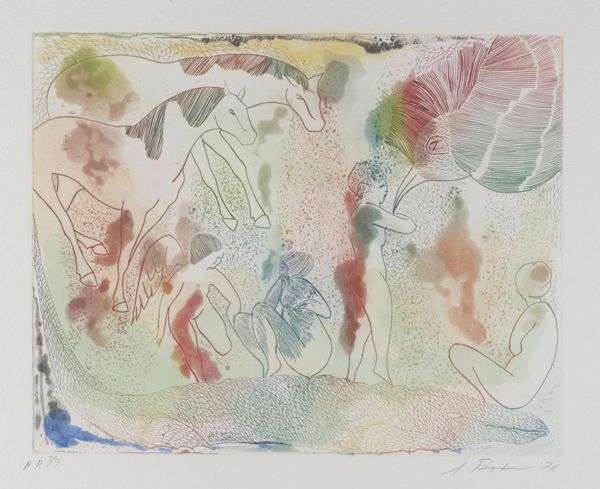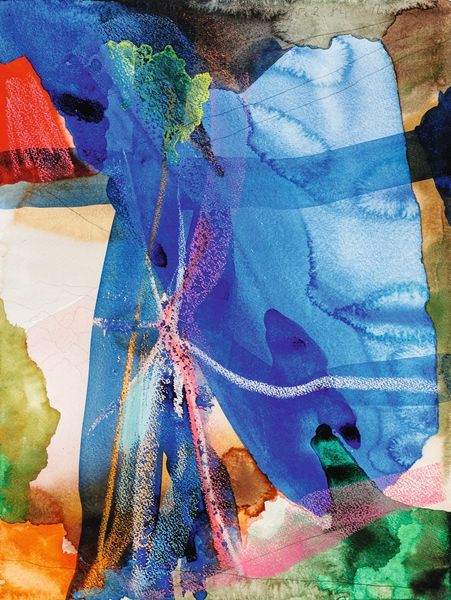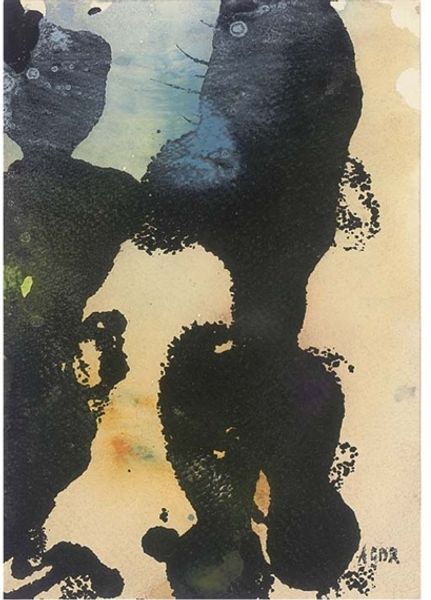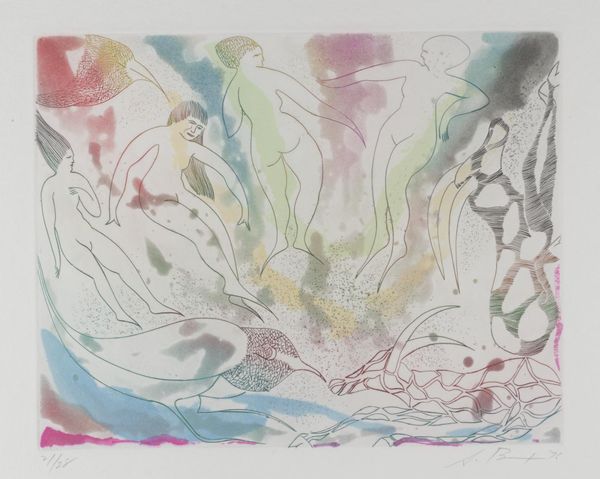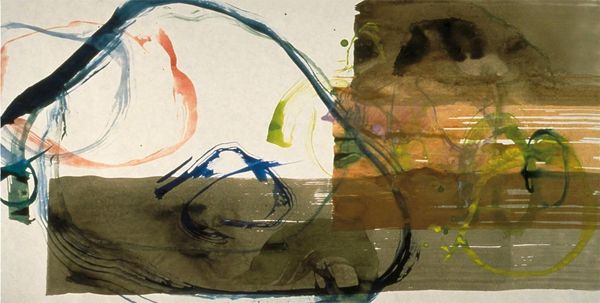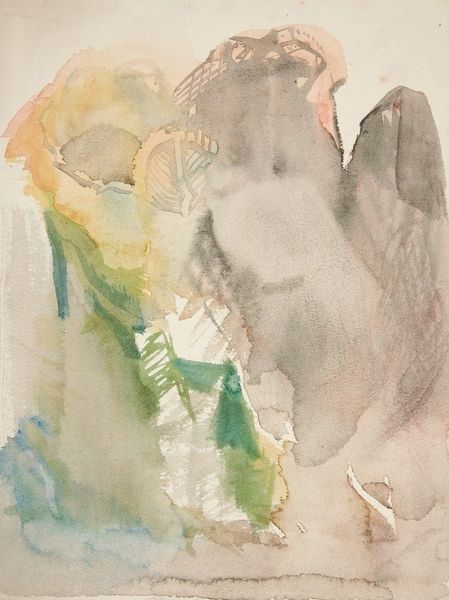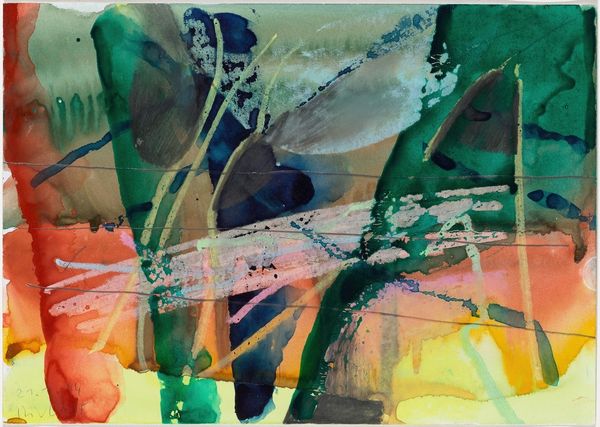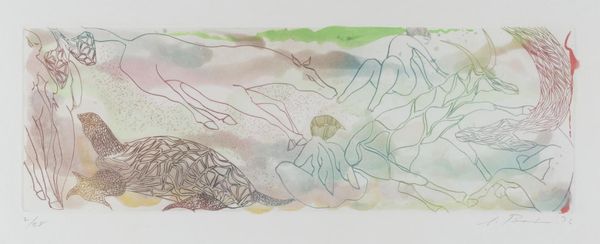
Dimensions: image: 313 x 302 mm
Copyright: © The estate of Stanley Boxer | CC-BY-NC-ND 4.0 DEED, Photo: Tate
Curator: This is "Argumentofnoavail," a small etching by Stanley Boxer, an American artist born in 1926. It's currently part of the Tate Collections. Editor: It feels almost dreamlike, with those pastel washes and delicate lines. The composition is fascinating—so much happening in a small space. Curator: Boxer was known for his abstract expressionist paintings, but this print reflects his engagement with mythic themes and the pastoral tradition. Note how he integrates figures into the landscape. Editor: Yes, the layering of textures and the subtle color gradations create a really evocative space. The figures seem to almost blend into the environment. It's quite ethereal. Curator: It definitely speaks to a broader cultural fascination with nature and the body, particularly during the latter half of the 20th century. Editor: I see it as a successful experiment with color and line. Curator: Indeed, and it's a potent example of how artists can translate complex ideas into intimate works.
Comments
tate 7 months ago
⋮
http://www.tate.org.uk/art/artworks/boxer-argumentofnoavail-p12050
Join the conversation
Join millions of artists and users on Artera today and experience the ultimate creative platform.
tate 7 months ago
⋮
Stanley Boxer is best known for his large scale abstract paintings which have a rich sculptural quality produced by thick, impasto brushwork. Boxer’s paintings were championed by American modernist critic Clement Greenberg (1906-1994), famous for his insistence that painters should eliminate subject matter in their work, aiming instead for the purity of abstraction. When considered in relation to his paintings, the prints Boxer produced at Tyler Graphics between 1975 and 1979 seem somewhat of an anomaly. Over this period, he created several series of figurative works, illustrating whimsical scenes featuring animals and winged figures. Boxer had, however, been making drawings of this nature throughout his career, and he insisted they were closely connected to his abstracts, made with similar gestures and motivation.


